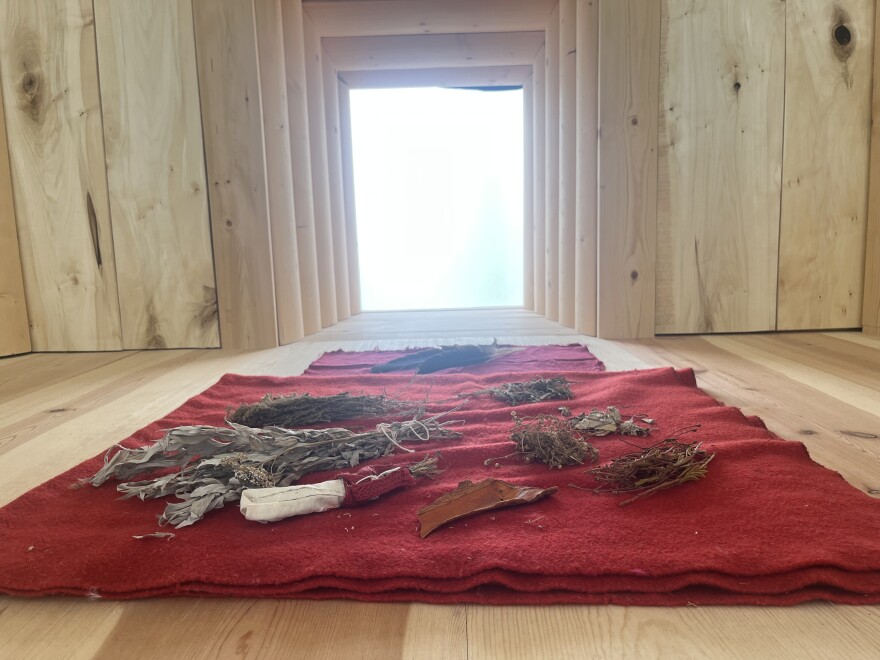The knowledge work and art of Indigenous healers and medicine people in Alaska is being featured at the Anchorage Museum. Good Medicine is a multidisciplinary exhibit and includes paintings, illustrations, a medicine wheel, a women’s house, and a men’s house–which are traditionally used for healing, teaching, and meetings.
Meda DeWitt, whose Lingít names are Khaat kłaat and Tśa Tsée Naakw, is a Lingít healer and curator of the exhibit. She said the show is both about healing and is healing in itself, holding space for traditional healers to be seen and to speak. That’s in contrast to colonization’s attempts to erase Alaska Native culture and traditional healing practices. DeWitt said healers were targeted during colonization because of the ways they protected people.
“You have to remove the medicine people, the spiritual leaders and the traditional healers,” said DeWitt. “And so, many folks were sent to insane asylums, or penitentiaries, or they were just taken out into the woods and just went missing, never came back, or out into the ocean.”
She said for decades Alaska Native people were forbidden from practicing traditional healing so people are now choosing ways to adapt the practice to contemporary life.
“We have to first fully articulate who we were pre contact and understand that to then be able to understand how to adapt it so that we are 21st century Indigenous people on our own terms,” said DeWitt.
Ultimately, DeWitt said that acknowledging the trauma and pain of colonization is part of a cultural healing process that will help create a better future.
“Let's not whitewash history,” said DeWitt. “Let's just bring it out, talk about it, and work as a community together to seek healing and repair of those relationships and historic events. So that way, our future generations don't have to carry on that burden any longer.”
Good Medicine will be up through spring of next year. Parts of the exhibit are fixed and there’s a rotating component that will feature new healers and artists every month or two. In March 2024, there will be a fire ceremony. People can write down their intentions for something they either want to let go or bring into their life. Those papers can be placed in a box in the exhibit to be burned in the ceremony.
RELATED: Kake resident finds healing by crafting traditional Lingít cedar roses


